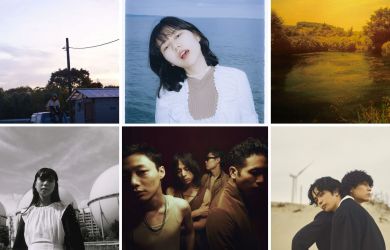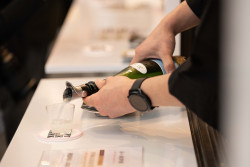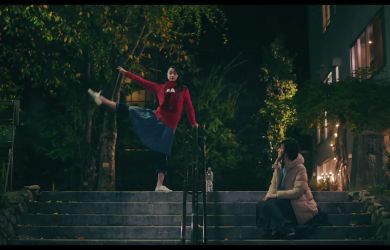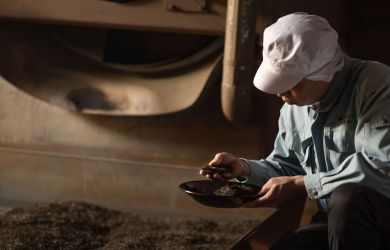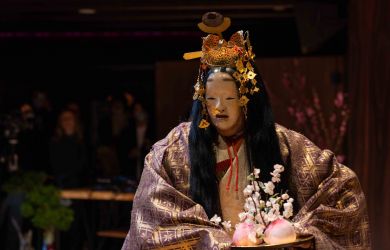
Originally published on metropolis.co.jp on September 2006

Photos by Stephen Mansfield
Once you have passed the small town of Qiaotou, a starting point for treks along the giant Tiger Leaping Gorge, the road begins a slow ascent, following the course of the Xiao Zhongdian River. Climbing through forests and woodland villages, part of the Yangzi River valley, the bus suddenly bumps over the top of a ridge and, in an instant, you are rumbling across the Tibetan highlands towards the city of Zhongdian.
Northwest Yunnan, a province in the remote southwest of China, has always looked and felt different from the rest of the country. A land of prayer flags, holy mountains, lamaseries, and rocks inscribed in Tibetan characters with Buddhist sutras, the name Zhongdian refers to both the 300,000 strong county and its main town, situated at an altitude of 3,160m. Contiguous with Tibet in the northwest, Sichuan in the north, and the Nujiang Lisu Autonomous Prefecture to the west, the county is home to an interesting mixture of Tibetan, Hui, Bai, Naxi and Han peoples.
As more outsiders arrive and commerce and tourism expand, cities in Yunnan are splitting into two quite different halves: the old town and the new. There are few real sights in the ancient Tibetan neighborhood of Zhongdian, located to the south of the main road of Changzheng Lu. The area is well worth exploring, though, for its insight into how the city must have looked and felt half a century ago. The first thing you notice is how quiet and rural the old district is compared to the newly constructed parts of town. Earthen lanes lead past Tibetan-style blockhouses and back gardens full of fruit trees and chickens. In the harvest season, hay dries on huge wooden frames right in the middle of this old quarter.

A sense of how different this region is from the rest of Yunnan can be tasted in its cuisine and tea drinking habits. The Tibetans in Yunnan cultivate wheat, corn and rice. Animal husbandry is an important occupation in the area. Yaks, Tibetan sheep, goats and cattle are native to the region. The long-haired yak is an important source of meat and milk. Also a useful means of transport, it is known in Tibet and Yunnan as the “Boat of the Plateau.” Highland barley is left overnight in water and, after being scooped out, placed in a pot to dry. It is then roasted with Chinese prickly ash, stirred with butter tea, and made into loaves of yellow bread.
Apart from using Zhongdian as a jumping off point for trips into the deep northwest of Yunnan and the borderlands of Tibet, most visitors will want to spend time exploring Songzanlin, a monastery located 5km north of the town. Founded in the 17th century by the fifth Dalai Lama, it was badly damaged by Chinese Red Guards during the Cultural Revolution of the 1950s and ’60s.
Designed as a smaller version of Lhasa’s famous Potala Palace, Songzanlin is a working monastery. At present there are 780 registered monks, although not all of them are residents. The main temple, at the top of a long flight of stone steps, is typically Tibetan: a four-story blockhouse structure with a gold-plated top. The grand Sutra-Pitaka Palace on the first floor can hold up to 2,000 monks at one time.

A fine view of the surrounding countryside can be seen by climbing up onto the building’s flat roof.
During festivals or when special rituals are held, it’s possible to see the Jiangmu Dance, an ancient performance accompanied by Tibetan music, in which monks wear masks representing demons, spirits and mythical animals. At other times it is quite likely you’ll be able to catch monks in small ensembles practicing Tibetan music. It’s customary for Songzanlin’s friendly, talkative monks to offer visitors a cup of hot Tibetan butter tea.
Over a bowl of the creamy, slightly salty yellow drink, I spoke to one senior English-speaking monk. The restoration work on the monastery, I said, seemed to be going well. “The buildings are being restored because the government wants more paying tourists to visit the monastery,” he replied. “Serious visitors are welcome, but we do not want to be disturbed by big groups of people,” he added.
“What could be done, then, to control the number of visitors?” I asked.
“In China, Buddhist groups like us have little power against the authorities,” he replied in the quiet voice typical of the older monks here. “Forty years ago they decided to destroy the monastery. Now they plan to rebuild it. There is not much we can do except drink butter tea and wait.”
There are several flights a week to Zhongdian from Kunming, the provincial capital of Yunnan Province. More interesting is the overland route by bus, either from Kunming, Dali or Lijiang. The Tibet Hotel on Tuan Jie is the essential backpacker/independent travelers’ accommodation. It also hosts lectures on Tibetan culture, and offers tours featuring the local flora, music and traditional Tibetan medicine. The Kangbala Hotel along Changzheng Lu is a decent option, with clean rooms and friendly staff. The AAA Café along Heping Lu, has a good selection of Chinese, local and Western food. Breakfast at the Tibet Hotel is good: steamed bread, Tibetan butter tea, boiled eggs and oatmeal porridge. The town is easy to negotiate on foot, or by motorized cyclos, a good way to get out to the Songzanlin monastery. The town can be quite chilly at night, even in the spring and summer months. The Snowfield Bookstore on Changzheng Lu has some good photo books of the area. The street has many shops; look out for locally made Tibetan tea bowls, crafted in azalea wood. China: Yunnan Province published by Bradt, is the only guide exclusive to the area.
[geo_mashup_map]

